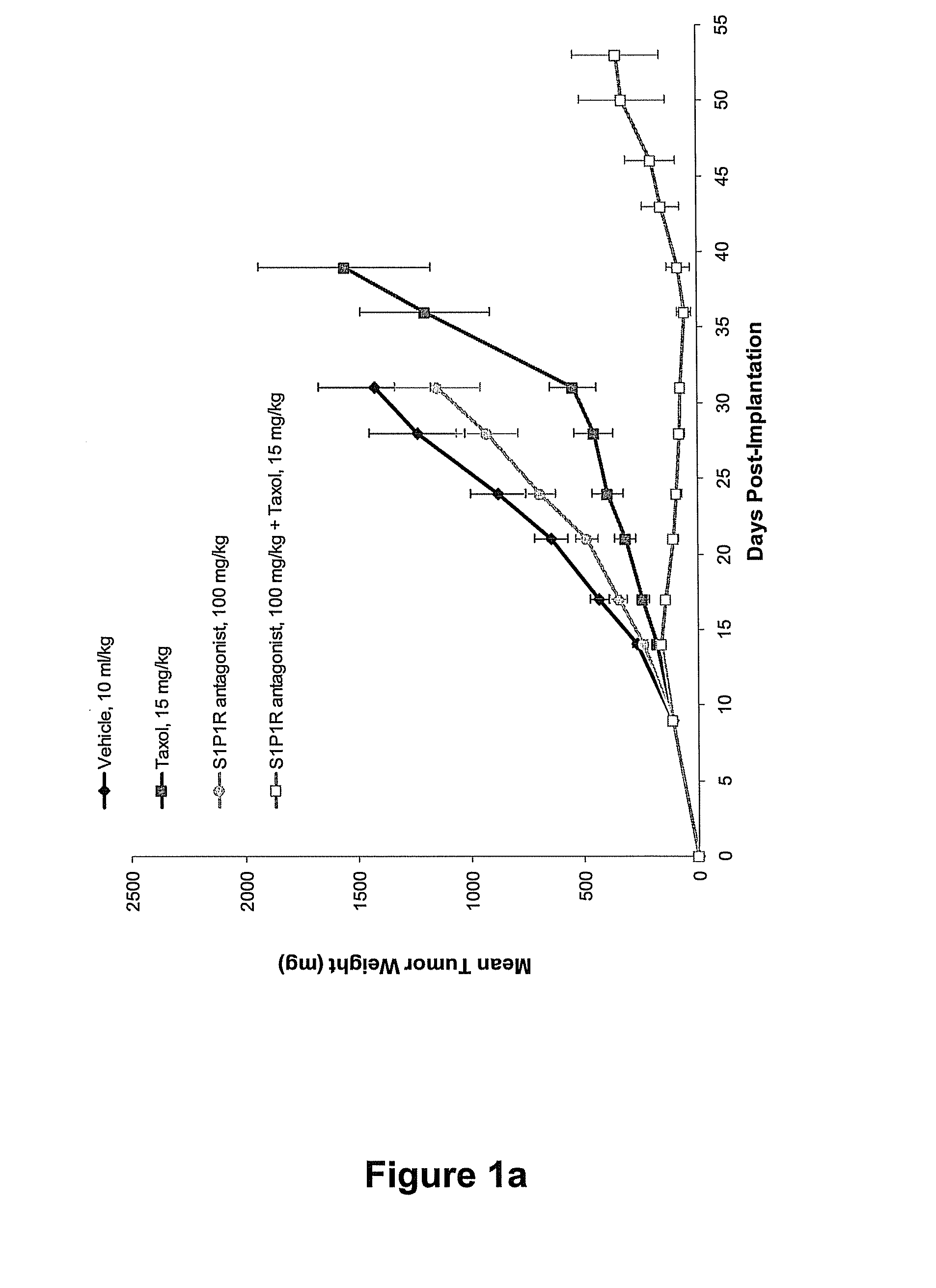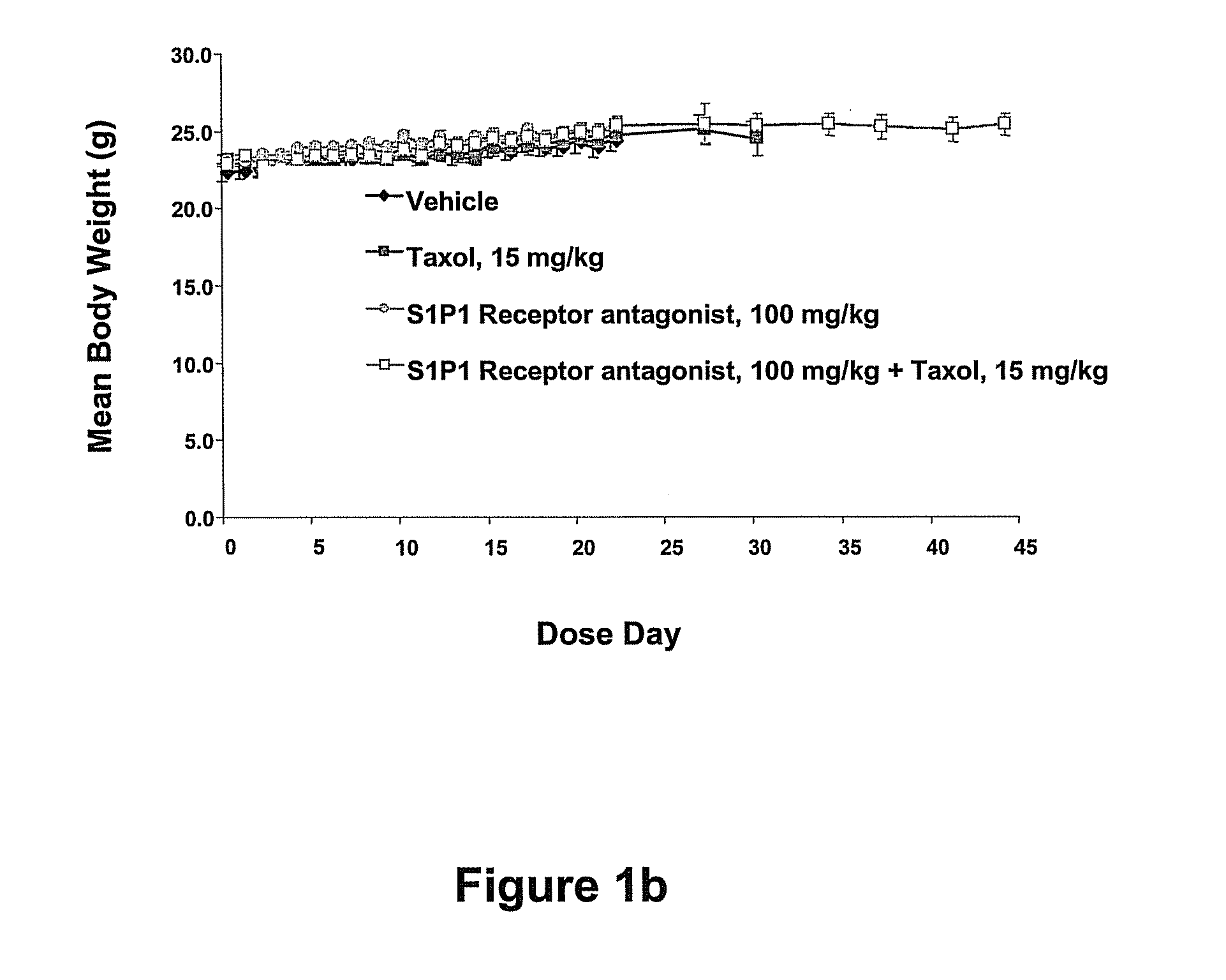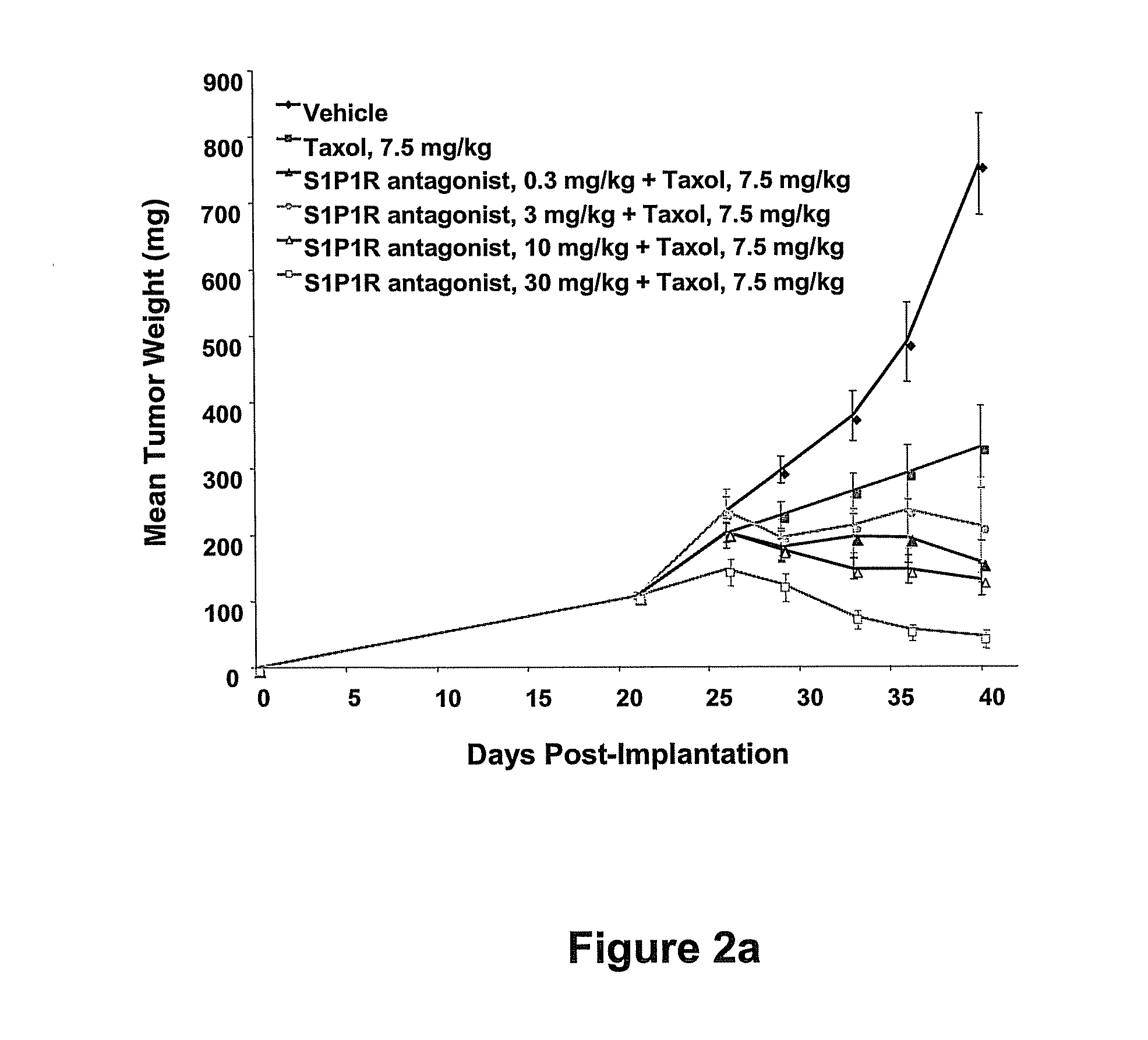Synergistic effects between sphingosine-1-phosphate receptor antagonists and antimicrotubule agents
a sphingosine and phosphate receptor technology, applied in the direction of biocide, muscular disorder, drug composition, etc., can solve the problems of cancer cell growth and division cessation, etc., to achieve the effect of superior results in cancer treatmen
- Summary
- Abstract
- Description
- Claims
- Application Information
AI Technical Summary
Benefits of technology
Problems solved by technology
Method used
Image
Examples
example 1
S1P1R Antagonist Assay
[0044]The S1P1R antagonist assay used to identify or analyze the compounds in Table 1 and list 1 is a fluorescent membrane potential dye measurement assay, indicative of intracellular cAMP changes due to G protein-coupled receptor activation. HEK293 cells engineered to express human S1P1 receptors and a cyclic nucleotide-gated (CNG) channel are obtained from BD Biosciences, 80300-250. The CNG channels are activated by elevated levels of cAMP, resulting in ion flux and cell membrane depolarization. Membrane depolarization is detected with a membrane potential dye. Stimulation of the cells with 5′-(N-ethylcarboxamido)adenosine (NECA), an A2b receptor agonist (Sigma, E2387), elicits an A2bR-dependent increase in cAMP.
[0045]Subsequent exposure of the cells to a S1P1R agonist suppresses the NECA induced increase in cAMP through S1P1R-specific signaling by inhibiting adenylyl cyclase and the formation of cAMP from ATP. The degree to which a test compound overcomes th...
example 2
Synergistic Effects of an S1P1R Receptor Antagonist and a Taxane Compound in an in Vivo Non-Small Cell Lung Carcinoma Animal Model
[0053]In this experiment, a maximum efficacy dose of an S1P1R receptor antagonist was used with an optimal dose of paclitaxel (MP Biomedicals cat #193532). Compound #2, 50, 52 or 75 from Table 1 were used in these experiments and a representative result is shown in FIG. 1. Nude mice (athymic female mice, Taconic Farms, Inc., 10 animals per group) were inoculated subcutaneously with human non-small cell lung carcinoma cells (ATCC #HTB-56) (1×106 cells per animal). After tumors were allowed to grow for 9 days, one group of animals was treated with a S1P1R receptor antagonist (100 mg / kg qd po). A second group of animals was treated with paclitaxel at a dose of 15 mg / kg q3d ip. A third group of animals was treated with a S1P1R receptor antagonist and paclitaxel using the same dose and schedule used for the individual agents. A fourth control group was treated...
example 3
Synergistic Effects of an S1P1R Receptor Antagonist and a Taxane Compound in an in Vivo Breast Cancer Animal Model
[0055]In this experiment, 4 different doses of an S1P1R receptor antagonist, 0.3 mgs / kg, 3 mgs / kg, 10 mgs / kg or 30 mgs / kg was used with an optimal dose of paclitaxel (MP Biomedicals cat #193532). Compound #2, 50, 52 or 75 were used in these experiments and a representative example is shown in FIG. 2. Nude mice (athymic female mice, Taconic Farms, Inc., 10 animals per group) were inoculated subcutaneously with human MDA-MB-231 cells breast cancer cells (ATCC #HTB-26) (1×106 cells per animal). After tumors were allowed to grow for 21 days, one group of animals was treated with paclitaxel at a dose of 7.5 mg / kg q3d ip. Four groups of animals were treated with a specific concentration of S1P1R receptor antagonist and the same concentration of paclitaxel using the same schedule used for the individual paclitaxel group. Finally, a control group was treated with the vehicles us...
PUM
| Property | Measurement | Unit |
|---|---|---|
| body weight | aaaaa | aaaaa |
| pharmaceutical composition | aaaaa | aaaaa |
| plasma | aaaaa | aaaaa |
Abstract
Description
Claims
Application Information
 Login to View More
Login to View More - R&D
- Intellectual Property
- Life Sciences
- Materials
- Tech Scout
- Unparalleled Data Quality
- Higher Quality Content
- 60% Fewer Hallucinations
Browse by: Latest US Patents, China's latest patents, Technical Efficacy Thesaurus, Application Domain, Technology Topic, Popular Technical Reports.
© 2025 PatSnap. All rights reserved.Legal|Privacy policy|Modern Slavery Act Transparency Statement|Sitemap|About US| Contact US: help@patsnap.com



